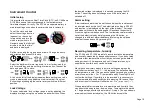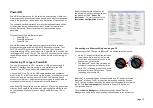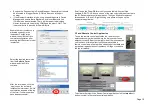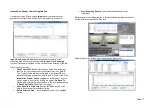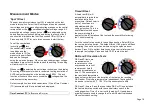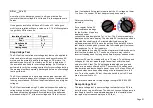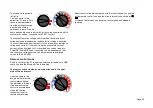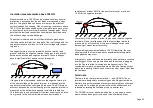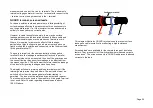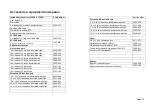
Page 21
DD = I
1min
/(V x C)
where
I
1min
is the discharge current in mA one minute after
removal of the test voltage
V
in Volts and
C
is the capacitance in
Farads.
Homogenous insulation will have a DD value of 0, while good
multi-layer insulation will have a value up to 2. The following table
is a guide to DD test results:
Insulation Condition
DD result
Bad
> 7
Poor
4 - 7
Questionable
2 - 4
Good
< 2
Homogenous
0
Step Voltage Test
The SV test is a controlled overvoltage test that can be applied to
stator and rotor windings on synchronous and asynchronous AC
motors and the armature and field windings on DC motors. It is
advisable to perform a PI test before an SV test to determine if
the insulation is suitable for overvoltage testing. If a PI test was
performed to verify the winding’s suitability for overvoltage testing,
the winding must be completely discharged before an overvoltage
test is performed.
The SV test is based on the principle that an ideal insulator will
produce identical readings at all voltages, while an insulator which
is being over stressed, will show lower insulation values at higher
voltages.
The SV test is selected using SV mode switch position and any
voltage range including V
L
range setting. If no custom SV test
has been setup then a standard five step test will be performed
where each step is 1/5
th
of the test voltage and 1/5th of the test
time If a standard 5 step test is required at the V
L
voltage, set timer
1 to 0 sec. if a custom SV test has previously been setup.
Rotary switch setting
indicated:
For a regular 5 step SV
test, resistance readings
for the first four ‘steps’ are
displayed under
consecutive time designators ‘1m’ to ‘4m’. The 5 minute reading is
displayed by the main display. The standard SV test duration can be
adjusted if desired from the 5 minute default value using the
up/down arrows and OK to save the setting. If the default 5 minute
test duration is changed by the user the four readings will not show
the respective ‘1m’ to ‘4m’ indicators.
For the standard five step SV test the step timer will always be set to
total test time divided by 5. Too short a step time may result in
incorrect readings and too long a step time may over stress a motor.
A custom SV can be created with up to 10 steps. To set timing and
voltages for this test press the right arrow from within the timer
setup for the SV test. The SV settings are adjusted using up and
down arrows and confirmed by OK. The custom SV enables each
step duration and test voltage to be set on up to 10 steps. When all
required steps have been setup change the subsequent time to 0
sec. To run the custom SV test, the mode switch is set to SV and
main rotary switch to V
L
.
The reference standard for step voltage testing is IEEE 95-2002.
Ramp Voltage Test
The ramp voltage test is an overvoltage test similar to the SV test
but with many very small steps. The slow continuous voltage ramp is
less likely to result in unpredictable damage to the insulation than
the rapid step increases employed in SV test.




